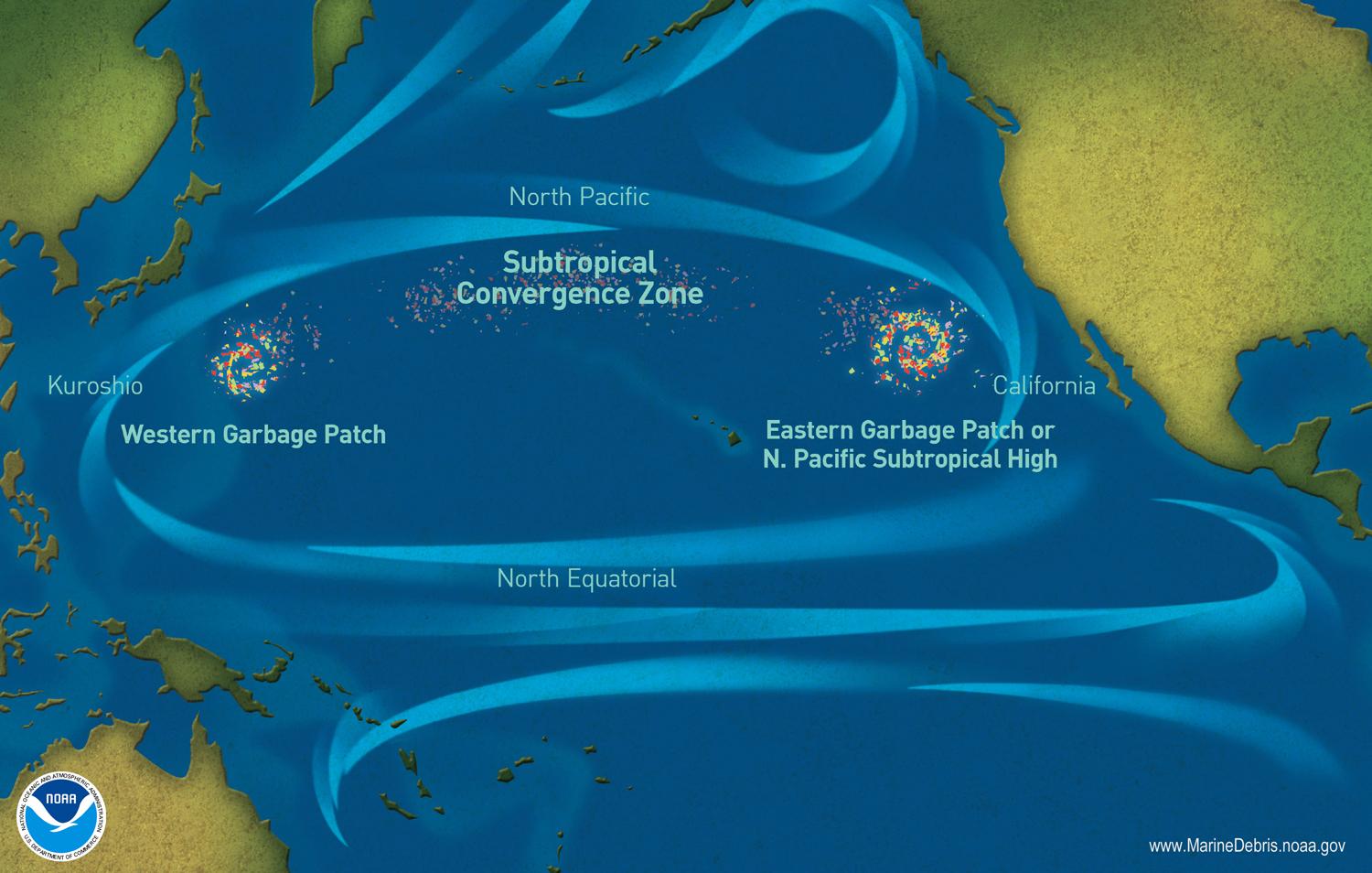The Great Pacific Garbage Patch

You’ve probably heard that there is a lot of plastic in the ocean, but did you know about the floating trash island known as The Great Pacific Garbage Patch?
What is The Great Pacific Garbage Patch?
The Great Pacific Garbage Patch (GPGP) is a collection of marine debris in the north Pacific ocean. Marine debris is litter that ends up in the ocean, seas and other large bodies of water. Some disagree with the name "garbage patch" as they claim it does not paint an accurate picture of the marine debris problem in the north Pacific ocean. Marine debris concentrates in various regions of the north Pacific, not just in one area. The exact size, content and location of the "garbage patches" are difficult to accurately predict. Ocean currents have moved the waste to accumulate in these areas, and much of the debris is actually small pieces of microplastic that are not immediately evident to the naked eye.
Why is there plastic in the ocean?
Human-created plastic ends up in the ocean accidentally, on purpose and by mismanaged waste practices. Some waste is from plastic pieces that were intentionally made to be small, for example microbeads in face wash. Some tiny plastic pieces were once larger plastic items which have just broken down to be small. Unfortunately, “Plastics never really go away. They just break down over and over and over again until they become smaller and smaller from sunlight and other environmental factors [like] waves, big storms, those kind of things."
Causes of plastic waste in oceans
- Land-based sources
- Urban and storm runoff
- Sewer overflows
- Beach visitors
- Inadequate waste disposal and management
- Industrial activities
- Construction
- Illegal dumping
- Ocean based sources
- Fishing industry
- Nautical activities
- Aquaculture
Why is it bad to have plastic waste in oceans?
Plastic waste in the ocean can be fatal to wildlife. Debris can easily be ingested by marine species, potentially causing choking, starvation and other impairments. Some species of birds and fish eat the plastics because they look like food. Additionally, there are chemicals in the plastics that can absorb other chemicals floating in the ocean while the plastic is in the creature’s stomach, making them even more sick. Ocean ecosystems are extremely important to humans for services like fishing, recreation and medicine, so harming ocean ecosystems is a huge economic and intrinsic loss to humans.
Why don’t we just clean it up by scooping up all the plastic?
These patches aren’t areas you can easily go through and skim trash off the surface; much of the trash is tiny microplastics that aren't easily removable. Plus, the patches are enormous. It would take 67 ships one year to clean up less than 1% of the trash in the north Pacific ocean. Until we stop human debris from entering the oceans, it’s just going to keep congregating in these areas.
So what do we do about all this plastic waste in the oceans?
Downstream
There are some projects working on cleaning up litter and plastic from the oceans, including 4Oceans and The Ocean Cleanup.
Upstream
A large amount of the plastic and waste ending up in the oceans is from inadequate waste disposal and management, as well as other mismanaged practices. If we reduce the amount of waste we have in the first place, the amount of plastics ending up in the ocean will be reduced. The U.S. sends some of it's trash around the world for other countries to deal with. Many of these countries have fewer regulations around waste disposal and it is often mismanaged. If the U.S. had to be responsible for it's own waste, perhaps less of it would end up in the oceans.


